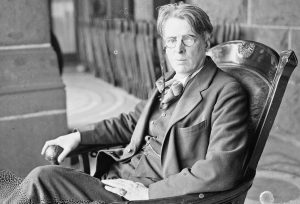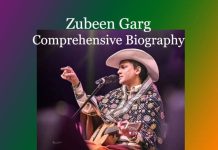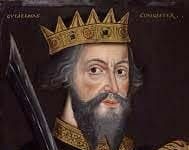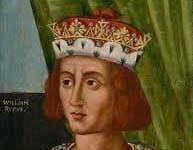W B Yeats-Brief Biography
W B Yeats
W B Yeats-Brief Biography
Once there was a lanky and ugly boy who seemed to be inattentive to sports and schooling and who liked to keep away from the company of his fellow mates for being called him ‘Black-boy’ ridiculously; but later on, that queer boy, when grew up, became a great poet and dramatist of the world. The name of that boy was William Butler Yeats.
William Butler Yeats, once a queer sports boy but later on a great poet and dramatist was born in Dublin, Ireland in 1865. His father, John Butler Yeats was a printer. His mother, Susan Pollexfen was a country girl from Sligo. She was a hesitant, unselfish, rustic woman who loved the village more than the sophisticated town life. She believed in fairies, ghosts and country lore. William Butler Yeats was the first child of his parents. He was influenced intellectually by his father, and from the side of emotion, he was influenced by his mother.
At the proper age, W B Yeats was sent to the Godolphin School at Hammersmith where he learned little. Both mentally and physically he was always conscious of himself that he was different from his fellow mates and so he avoided the company of other boys of his age. He did not take part in school sports. To defend himself from the funny but ridiculous treatment of his fellow mates, he made friends with a healthy robust boy. He did not pay any attention to school studies. Later on, he told lamenting upon that his precious time was wasted in school. He was slow to learn and very bad at spelling for which his father used to rebuke him, but there seemed no mending and development.
In 1876, the Yeats family went to London with a view to live there, but Yeats spent his life of freedom in the village of Sligo in a holiday mood where his imagination was kindled by the stories of fairies, ghosts, myths and clairvoyance. Though Yeats was inattentive to his school studies, yet he preferred to read English poets, and thus his mind was inclined to verses. Even more, his father encouraged him to practise verses and thus being encouraged, he began to write poems. In 1880 the family returned to Dublin. By this time Yeats met John O’Leary, the Irish patriot and with him, Yeats became interested in the cause of Irish Nationalism. Then he wrote many lyrics expressing his love for Ireland.
Again the family migrated to London to settle there permanently. There in the ‘Rhymer’s Club,’ he came into contact with some writers such as — Ernest Dowson, Lionel Johnson, and Arthur Symons and learned a great deal from them. He made a friendship with Arthur Symons who taught him the poetic process and the technique of symbolism.
In London in 1891, Yeats founded the Irish Literary Society and in 1892, he with some others founded the National Literary Society in Dublin — which were the landmark events in the history of Irish Literature. Till then, there were no individual national plays and theatres in Ireland. Like the theatres in London, the theatres in Dublin were busy producing the plays of Henrick Ibsen and his imitators. It was left to Yeats and his friends and collaborators who founded the “National Theatre Society” and began to create a new type of drama that was simultaneously Irish in themes, characters, and spirit.
In 1899 W B Yeats met a beautiful girl named Maud Gonne and fell in love with her which proved to be the greatest experience in his life. She was the daughter of an English colonel. She was tall, beautiful, and majestic as a queen and had a good interest in fine arts though she became a revolutionary, Yeats’ first love was with poetry but when he fell in love with Maud Gonne who became a fierce revolutionary. Then to impress Maud, Yeats engaged for some years in a political movement. For a time, Yeats even joined the secret extreme revolutionary Irish Republican Brotherhood. All this done by Yeats was to attract Maud Gonne to him. Though Maud Gonne seemed to be fallen in love with him, she refused to marry him and married an army Major by the name of John Mac Bride who was a lout and corrupted person. This event had broken the heart and mind of Yeats but it gave a new turn to his writing. Many of his love poems deal with the theme of Maud Gonne.
In 1889, W B Yeats wrote his first play ‘The Countess Cathleen’ and with other friends and collaborators as — Lady Gregory, Edward Martyn, George Moore, Florence Farr and John Millington Synge, Yeats tried his best to find an Iris National Theatre Society and as a result of their endeavour Abbey Theatre took birth in 1904 and by it, they began to stage their plays. At first Abbey Theatre met many obstacles both from the mob and the British Government but due to Yeats and his collaborators’ endless commitment, at last, the Abbey Theatre determined to surmount all obstacles. In that Abbey Theatre, that was how the Irish National Theatre Society was known, his ‘Countess Cathleen’ was staged first successfully.
The Abbey Theatre, by 1909, had established itself as the national theatre of Ireland fighting many battles and winning many victories. The last of the battles was to be fought on the stage in America as Yeats and some of his friends took a tour to America with the Abbey Theatre with a view to performing their national plays. Yeats and Lady Gregory took the directorships of the Abbey Theatre but they met the same opposition in America as they had met in their motherland. But it was due to Yeats and Synge’s incessant perseverance, at last, the Abbey Theatre could attract the general public, as well as critics and universities as many of Yeats and Synge’s plays, were prescribed in the syllabi of the universities of Ireland and Britain. Thus the Iris Dramatic Movement came to be successful the credit for which goes first to Yeats.
Already being frustrated by his lover Maud Gonne, he developed a liaison with a married woman by the name of Diana Vernon; but yet his love for Maud Gonne did not get quenched. So in 1898, he dropped out of politics and thus his political nationalism came to an end and took literature actively by which he rendered his best to wake up the peasants.
His liaison with Diana Vernon had been continuing. Ha had even developed sexual relations with her. In 1916 Maud Gonne’s husband Major John Mac Bride, who was a lout and corrupted person, was executed. Hearing this, Yeats went to France and proposed Maud Gonne to marry as still, he had a passion for her. But finally, she refused to marry him. Then he asked her permission to propose to her adopted daughter Iseult, but she rejected that proposal also. Being disappointed by Maude Gonne and Iseult, Yeats married George Hyde Less in 1917. Already he published some books of poetry and after the recognition of his works he was awarded the Nobel Prize for literature in 1923.
Yeats began his poetic career with Romanticism and ended with realism. He was the last successful romantic poet. Love for his beloved, love for his motherland and love for Nature and man are the main themes of his poetry; but his love is coloured by the note of mysticism and symbolic imagery. Amongst his contemporaries, he was the most refined as well as the most skilled poet in style and in the use of language. His use of imagery is easy and common not private and difficult as that of T.S. Eliot.
Besides, being a poet, W B Yeats was a great dramatist also. His dramas are poetic like that of John Millington Synge. As a dramatist, his place is after only Synge. The Countless Cathleen, the Green Helmet, the Prayer Queen, the Hour Glass, the Cat and the Moon, Resurrection—are his well-known plays. In some poems and plays, he tried to revive the Irish myths and legends and in this respect, he won the Crown of Victory.
During the last years of his life, he had been suffering from bodily weakness and mentally spiritual emptiness for which he went to Majorca in search of peace where he met an Indian sage with whom he pondered over the Upanishads and thus was deeply influenced by the Indian philosophy. He rendered his help to the swami in translating the ‘Upanishads’ and Patangalis ‘Yoga Sutra’. Moreover, he was a great admirer of Rabindranath Tagore and wrote a critical Preface to Rabindranath’s ‘Geetanjali’. He wanted to write a sort of European Geeta. His last poem ‘The Black Tower’ and ‘Under Bon Bulben’ contained the central theme of Geeta. But after writing these poems his health began to trouble him badly and was waiting to meet death till 28th January 1939 and on that day his soul came out of his mortal body and soar up to heaven. He was temporarily buried in the cemetery of Requerbrnne but later on, his dead body was brought to Drumcliff as he wished. In his epitaph there is written:
”Under bare Bon Bulben’s head
In drum cliff churchyard Yeats is laid
An ancestor was rector there
Long years ago, a church stands near,
By the road an ancient cross
No marble no conventional phrase!
On limestone quarried near the spot.
By his command these words are cut;
Cast a cold eye
On life, on death
Horseman, pass by!” 0 0 0
W B Yeats
N.B. The article ‘W B Yeats-Brief Biography’ originally belongs to the book ‘The World Writers-Brief Biographies‘ by Menonim Menonimus.
W B Yeats
Books of Composition by M. Menonimus:
- Advertisement Writing
- Amplification Writing
- Note Making
- Paragraph Writing
- Notice Writing
- Passage Comprehension
- The Art of Poster Writing
- The Art of Letter Writing
- Report Writing
- Story Writing
- Substance Writing
- School Essays Part-I
- School Essays Part-II
- School English Grammar Part-I
- School English Grammar Part-II..
Books of S. Story by M. Menonimus:
Related Search:
- Lives of Poets
- Writers’ Lives
- Top Hundred Writers
- Best Writers of All Time
- Most Eminent English Poets











